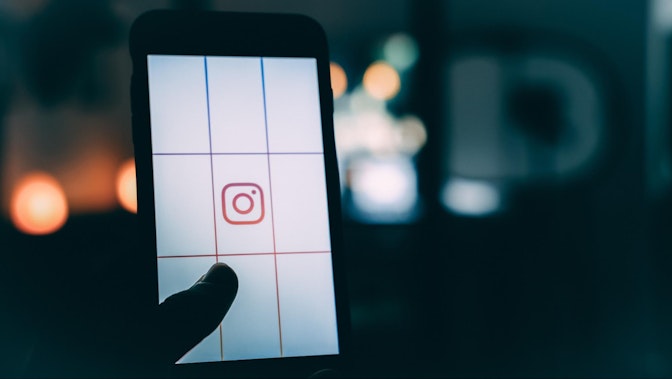Digital marketing is essential.
Without it, your business is a ghost — unseen and ignored.
A ghost that floats about your deserted website, your barren social media channels, and your empty bank account
*Gulp*
It gets worse.
The internet is a crowded place. If you can’t differentiate your business, cut through the noise, and land customers, your business won’t survive.
That is, if you ever manage to get it off of the ground…
However, if you get your digital marketing right? If you understand how digital marketing works, and you can leverage its proven principles?
Well, then your ghost of a business will come to life.
You’ll be able to drive traffic to your site, convert those people into customers, and put money into your bank account.
Sound good?
In this article, you’ll get a thorough overview of what digital marketing is and how you can use it to grow your business.
So, let’s get into it.
Post Contents
- What Exactly Is Digital Marketing?
- The True Power of Digital Marketing
- The Digital Marketing Funnel
- Digital Marketing Has Two Sides: Inbound and Outbound
- The 6 Primary Digital Marketing Channels
- 1. Pay-Per-Click Advertising (PPC)
- 2. Email Marketing
- 3. Social Media Marketing
- 4. Influencer Marketing
- 5. Search Engine Optimization (SEO)
- 6. Content Marketing
- Summary
- Want to Learn More?



What Exactly Is Digital Marketing?
In this case, Wikipedia does a great job of summing it up:
“Digital marketing is the marketing of products or services using digital technologies, mainly on the Internet, but also including mobile phones, display advertising, and any other digital medium.”
→ Click Here to Launch Your Online Business with Shopify
So, this means that TV, radio, and the electronic billboards in Times Square all count as digital marketing.
But… we’re going to completely ignore those methods today.
You know, just like most Millennials do anyway.
Because for most small businesses, online marketing is by far the most important part of digital marketing.
Why?
The True Power of Digital Marketing
Firstly, the barrier to entry is low.
It costs a lot of money to use traditional media. But many forms of digital marketing — like content marketing — don’t cost any money at all.
Today, all you need to become an expert digital marketer is a computer, an internet connection, and a desire to learn.
And maybe a copious amount of energy drinks.
So, there are currently 4.05 billion Internet users worldwide. And this number is increasing every day.
What’s more, 77 percent of Americans now own a smartphone.
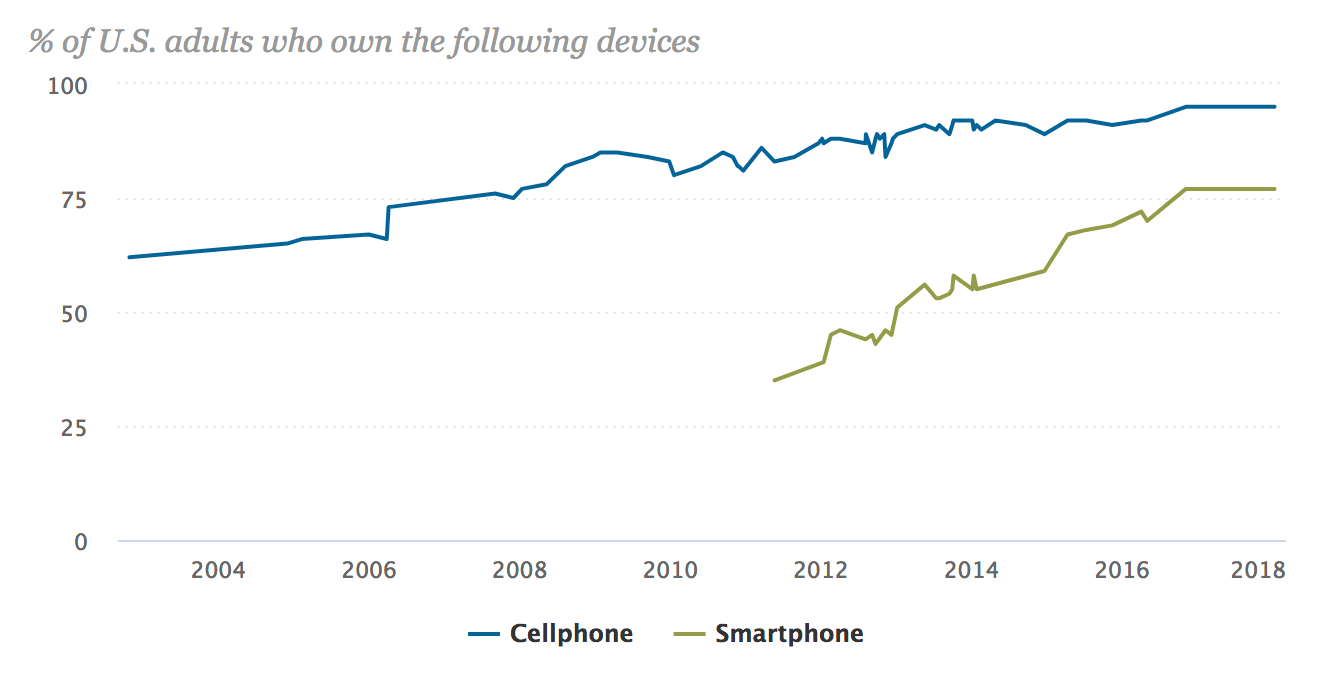
Bottom line?
Never before in history have we been able to reach so many people, so easily.
And unlike most traditional marketing methods, digital marketing allows marketers to accurately measure their activities in real-time.
Here’s what I mean:
Previously a business might place an ad promoting workout equipment in a men’s magazine and then cross their fingers.
But, things have changed.
Now, you can use a tool like Facebook ads to target only 22-25-year-old males in metropolitan areas, who have a strong interest in CrossFit, and dance music.
Then, you can track every view, like, comment and click. Plus, you can use a tracking pixel to see exactly what people do after they click on your ad.
So, you’ll be able to tell precisely how effective your ad has been.
Try working out how many people flipped the page and paid attention to your magazine ad — much less how many products the ad sold…
Now, let’s examine the big picture.
The Digital Marketing Funnel
Digital marketing strategy is based on what’s called a ‘sales funnel.’
The idea is to use various tactics to hook people into the funnel. Then, you work to move them down the stages until they become customers, and then advocates, of your brand.
Here’s a broad overview of the digital marketing funnel:
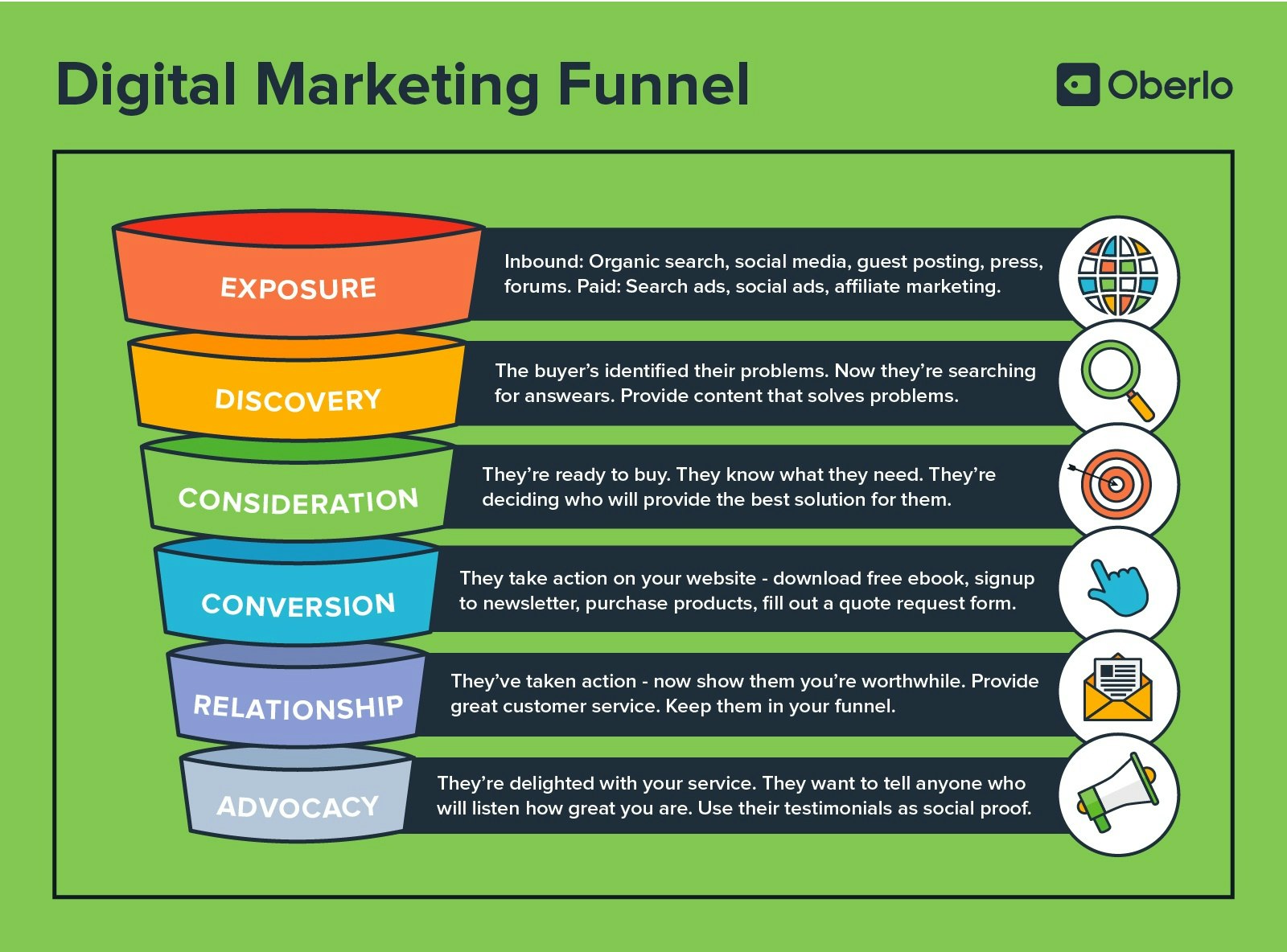
Let’s run through each of the stages.
Stage 1: Exposure
At the top of the funnel, you need to get people’s attention.
This could involve the use of pay-per-click advertising, optimizing your website for search engines, or social media marketing.
Stage 2: Discovery
Once you’ve exposed prospects to your brand, they enter the discovery stage.
At this point, they start to explore their needs or desires, and the offers available to them.
Stage 3: Consideration
Now, people are ready to buy, but they’re considering their options.
They’re deciding what to buy, and who to buy from.
Stage 4: Conversion
The conversion stage is when the buyer takes some sort of action.
This could be signing up to your mailing list, or purchasing your product.
Stage 5: Relationship
Now that they’ve taken action, it’s your job to re-affirm that they’ve made the right decision.
If they signed up to your mailing list, provide them with useful information. And if they purchased your product, provide a positive customer experience.
Stage 6: Retention and Advocacy
Once you’ve built a relationship, you’ll want to grow the customer relationship to increase repeat purchases.
Also, you’ll work on turning your customer into an advocate of your brand.
You can do this by encouraging them to review their purchase or share your content on social media.
Next up?
Digital Marketing Has Two Sides: Inbound and Outbound
It’s important to understand the two overarching strategies used in digital marketing:
- Inbound marketing, also known as permission-based marketing.
- Outbound marketing, also known as interruption-based marketing.
This graphic breaks down the differences:
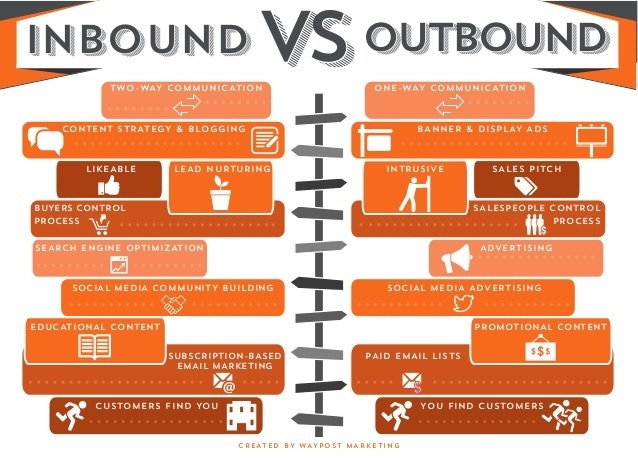
Let’s take a deeper dive into each of them.
What Is Outbound Digital Marketing?
Outbound marketing is essentially just advertising.
It’s also known as interruption-based marketing because consumers rarely choose to seek it out.
Instead, the idea is to promote your product or service wherever there are eyeballs. With the hope that a percentage of the people who see your promotion will convert into customers.
You’ll usually have to pay to access these advertising mediums.
Examples of outbound marketing include:
- Pay-per-click advertising on platforms like Google and Facebook.
- Most forms of traditional marketing: Radio, magazine, and TV adverts, etc.
- Event sponsorships and billboards.
- Direct mail (unsolicited snail mail).
- Email blasts to people who haven’t subscribed to your mailing list.
Let’s look at an outbound marketing example from MeUndies.
They use pay-per-click advertising on Facebook to interrupt users with their marketing message:
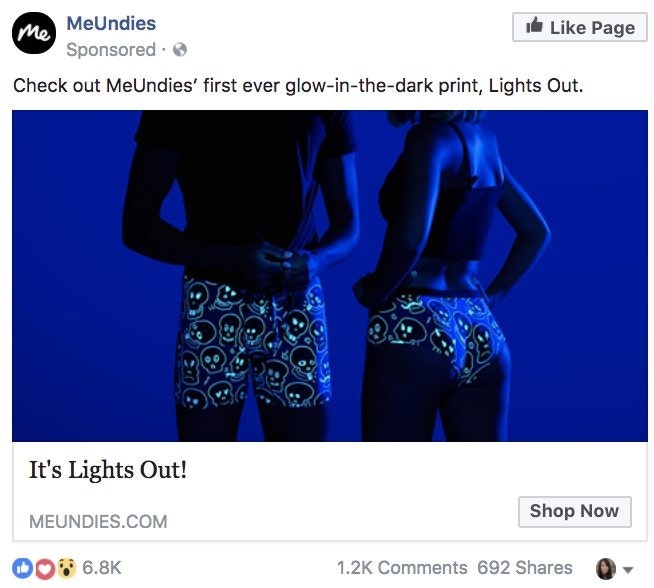
The advertisement is designed to catch people’s attention and get them to click through to the product page.
Then, MeUndies will attempt to sell their product to the visitor.
What Is Inbound Digital Marketing?
Here’s definition of inbound marketing from industry leader Hubspot:
“Inbound marketing is focused on attracting customers through relevant and helpful content and adding value at every stage in your customer’s buying journey. With inbound marketing, potential customers find you through channels like blogs, search engines, and social media.”
Simply?
Inbound marketing is about building a relationship.
Zac Gregg from Vital shares the two main premises to permission-based marketing:
- “First, communicate via mediums in which the audience has given you permission to communicate.
- Second, answer the questions people are asking and proliferate those answers around the web in anticipation of the question.”
Basically, give before you get.
Here’s a graphic showing the inbound marketing process, with some of the tactics often used in each stage:
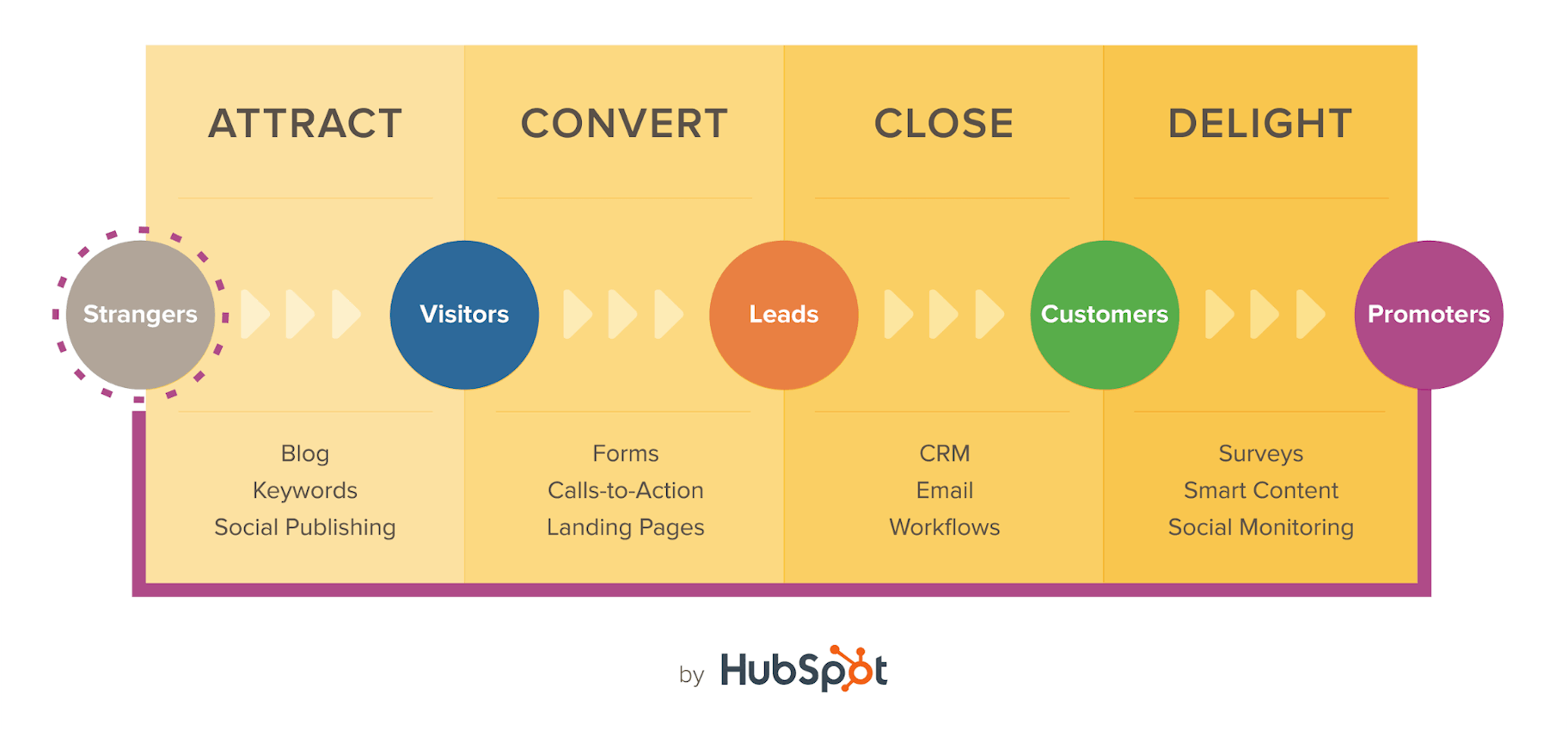
To put inbound marketing into context, think of the Yellow Pages.
Before the internet, the Yellow Pages was one of the few places that you could advertise where people were actively looking for you, and you weren’t interrupting them.
Examples of inbound marketing include:
-
- Optimizing your website and content to appear in the search engine results pages (SERPs).
- Creating and sharing value-driven content, like blog posts, and ebooks.
-
- Email marketing where subscribers voluntarily opt-in to hear from you.
- Building a community on a social media platform.
For example, Shopify provide free, valuable content to help you start and grow an ecommerce business.
This blog post that you’re reading right now is inbound, permission-based marketing.
What’s more, we encourage you to sign up to our mailing list at the top of every blog post, so that we can continue to provide you with more relevant, useful content:
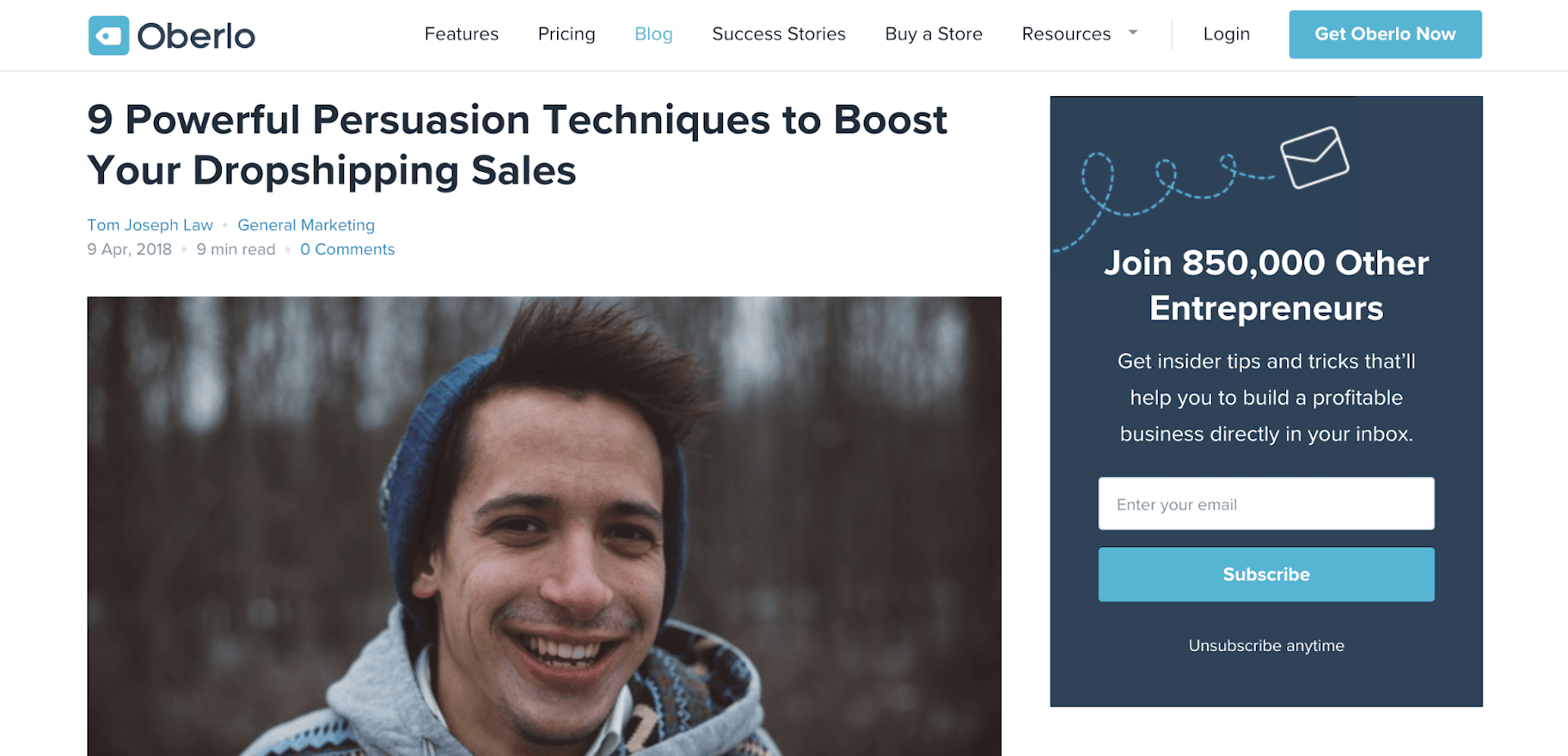
Our aim is to build a long-term, mutually beneficial relationship with people who want to start a business.
We provide the tools and the resources, and you create the business!
The 6 Primary Digital Marketing Channels
Okay, now that you understand the foundations of digital marketing, let’s take a deeper look at 6 key channels that you can use to grow your business.
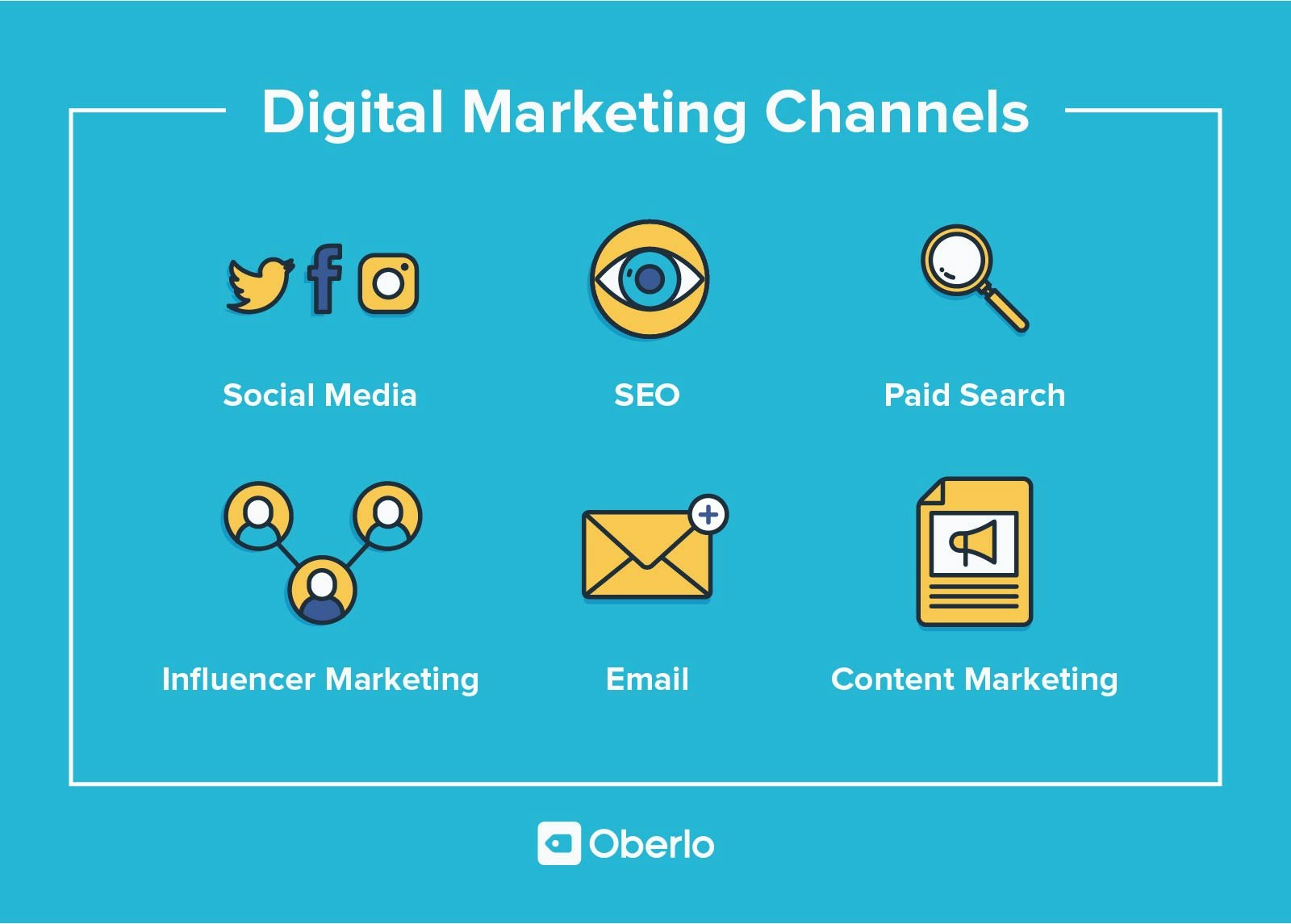
- PPC Advertising
- Email Marketing
- Social Media Marketing
- Influencer Marketing
- Search Engine Optimization
- Content Marketing
First up?
1. Pay-Per-Click Advertising (PPC)
PPC — sometimes referred to as cost-per-click (CPC) — is a powerful tool.
According to Google, businesses generally make an average of $2 in revenue for every $1 they spend on AdWords.
PPC is an online advertising method in which advertisers are only charged when a user actually clicks on their ad.
It’s based on an automated auction system.
This means that advertisers must bid on the keyword terms that they want to ‘trigger,’ or display their ads.
For example, when using Google Adwords, you can bid to have your ad display for keyword ‘record player.’
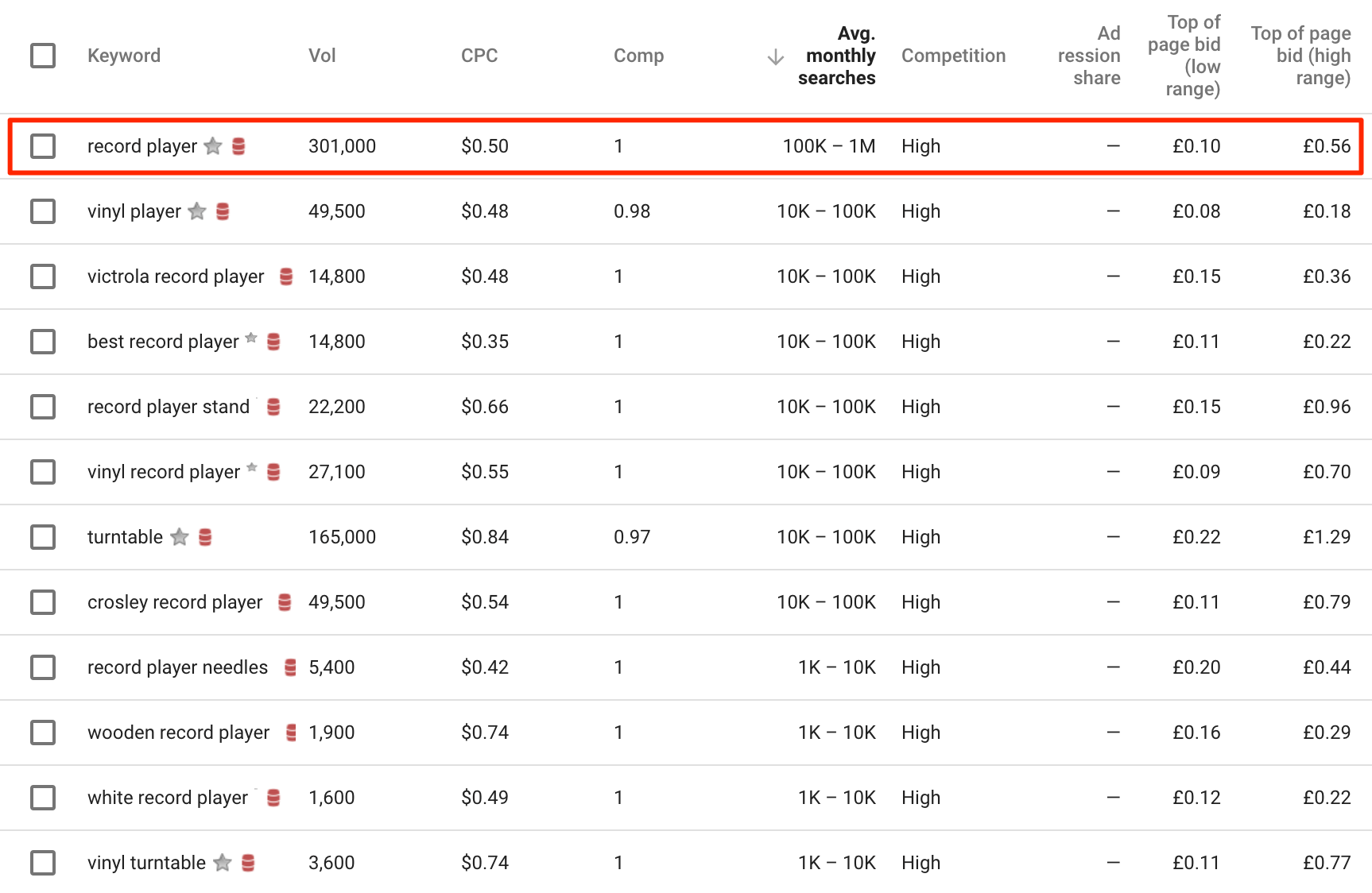
Then, when someone searches ‘record player’ on Google, they’ll see ads alongside the organic search results.
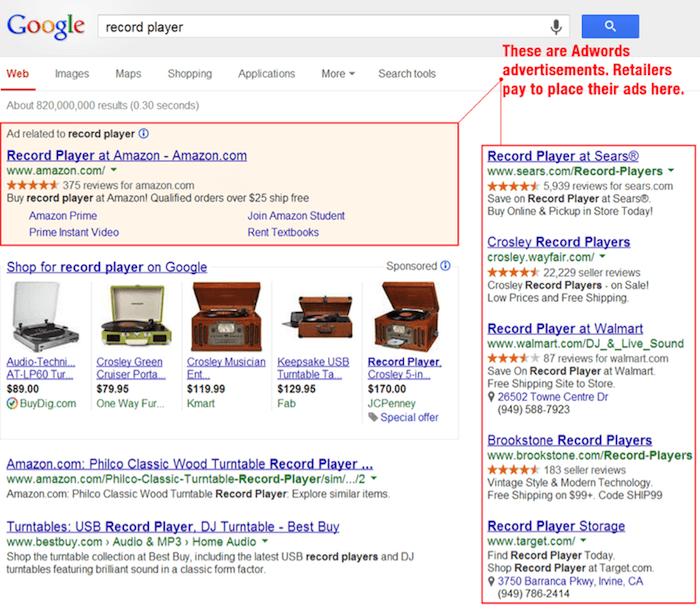
Facebook goes one step further. They allow you to create a highly targeted audience to display your ads to.
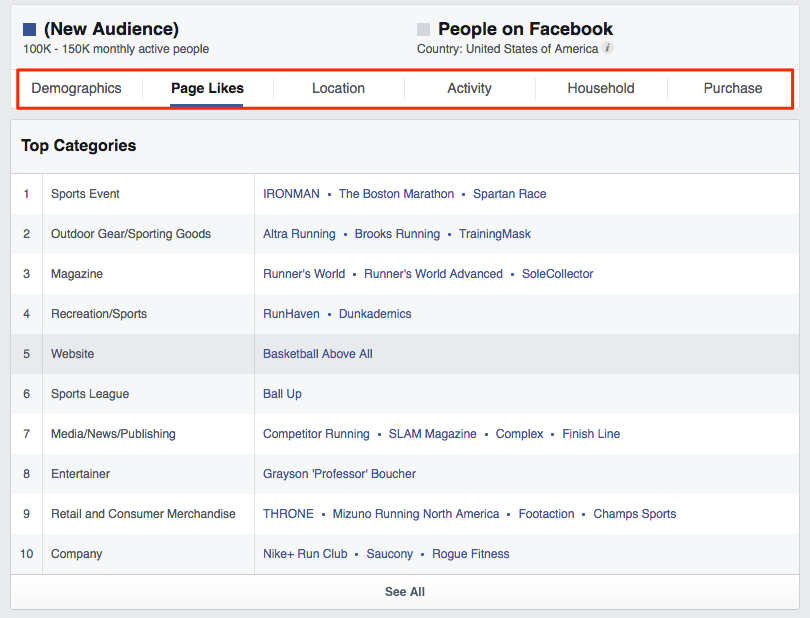
But, unlike most forms of advertising, advertisers can’t simply pay more to get their ads to appear more prominent than their competitor’s ads.
Why?
Because this system also determines the relevance and validity of advertisements that appear on their SERPs.
Platforms prioritize the searcher’s interests over the advertisers.
This is a smart move that ensures the platform is the go-to place for searchers. Which in turn, makes it the go-to place for advertisers.
Google and Facebook aren’t the only PPC platforms.
Other popular PPC advertising platforms include Instagram, YouTube, LinkedIn, and most recently, Pinterest.
2. Email Marketing
This is the process of sending direct marketing communications to people via — you guessed it — email.
Email often gets less attention than more exciting methods, like social media and influencer marketing.
And sure, people are inundated with email.
In fact, business users send and receive an average of 121 emails a day.
But, don’t underestimate the power of email.
Email marketing has a median ROI of 122 percent. This is over four times higher than other marketing formats like social media, direct mail, and paid search.
Now, most email marketing campaigns start with a lead magnet.
This is usually a free piece of content, or a discount designed to entice people to subscribe to your mailing list.
Here’s an example from Helm Boots:
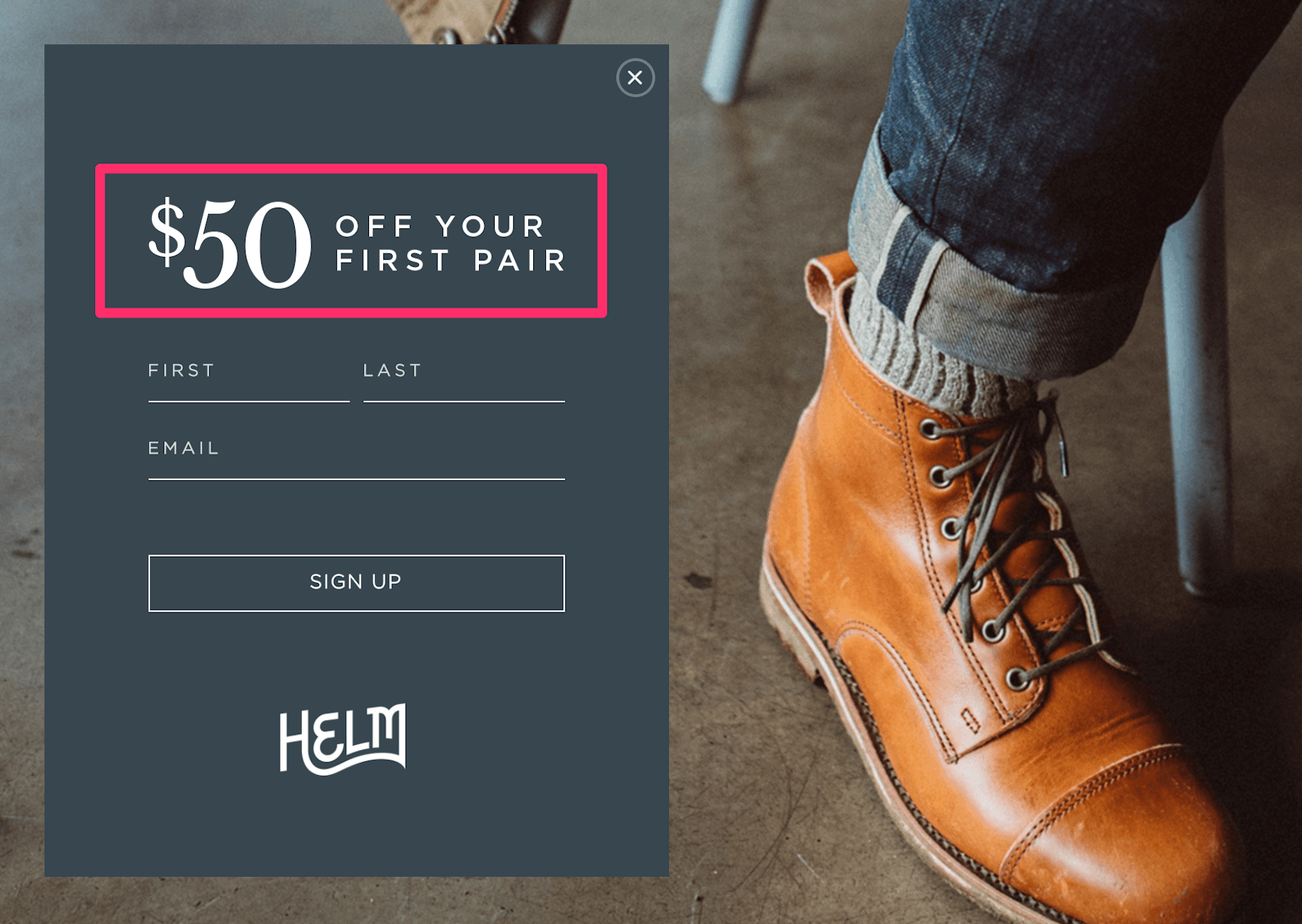
Then, you’re able to nurture your subscribers with useful content, announcements, giveaways, and discounts.
You can also boost your sales using email segmentation.
This is when you create groups of subscribers (called ‘segments’) based on their preferences or their stage in the marketing funnel.
Then you can create automated campaigns (called ‘autoresponders’) which are specifically targeted to each of those segments.
For example, you could segment subscribers who abandoned their carts. Then send out an autoresponder to these people in an effort to get them to complete their purchase.
In summary?
Email marketing is a powerful digital strategy that every business can harness to grow.
Next up:
3. Social Media Marketing
This is the process of acquiring attention and traffic through social media channels – and 3.5 billion people worldwide use social media daily.
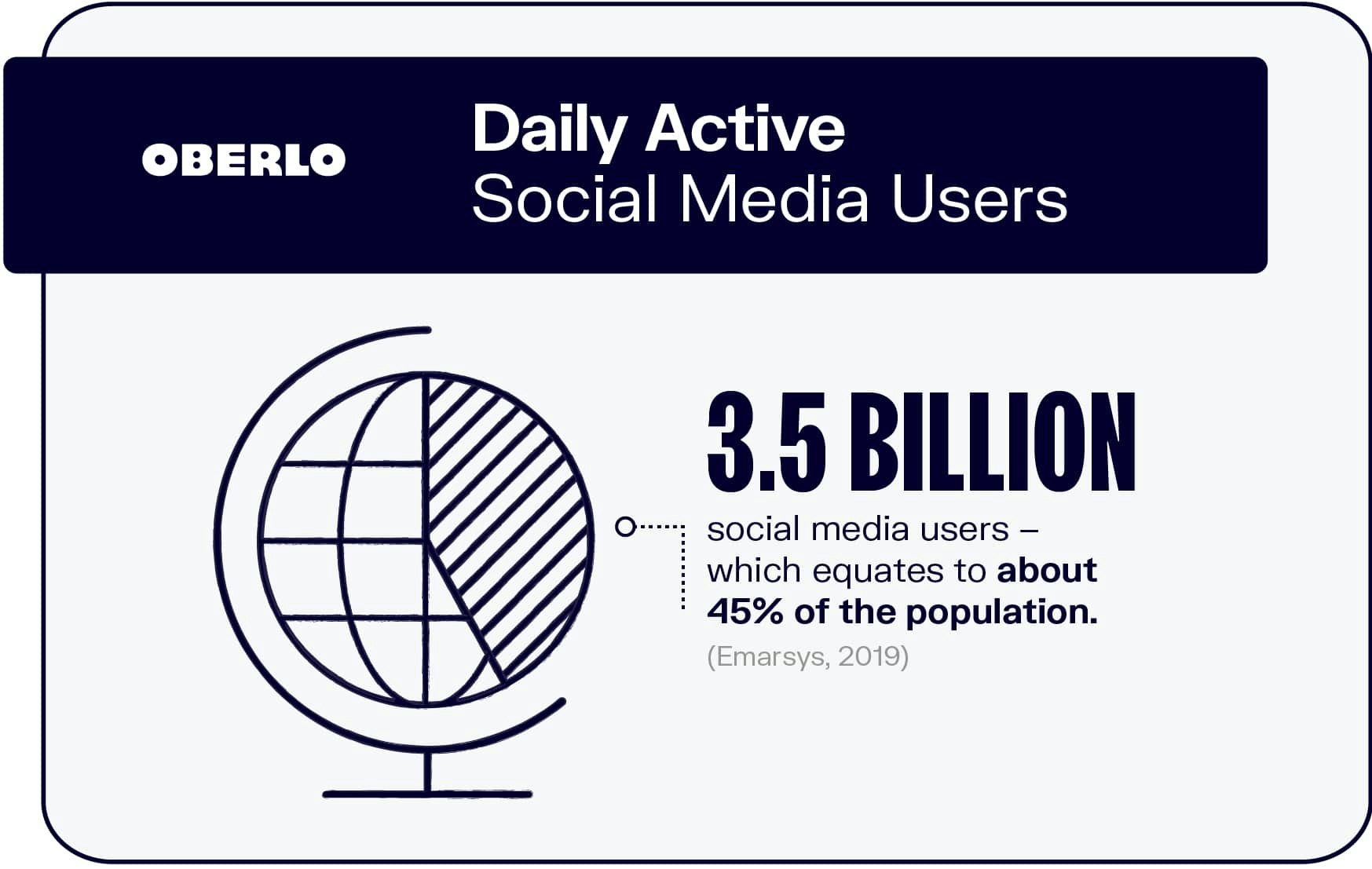
Remember, inbound social media marketing focuses on building a community, whereas outbound social media marketing could be PPC ads like this one:
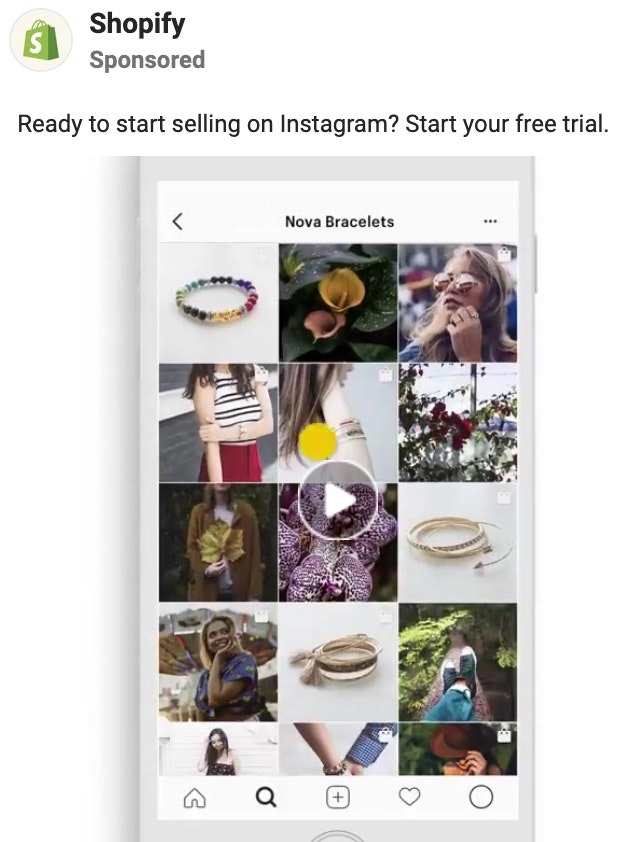
Or, it could entail reaching out to people directly using social media.
And there are tons of ways you can use social media to market your business, including:
- Build a community in your niche.
- Attract and direct traffic to your website.
- Advertise promotions or products.
- Deliver customer service directly.
Okay, next on our list of digital marketing methods?
4. Influencer Marketing
First, what is an ‘influencer’?
Simply, an influencer is anyone with a relatively large online following. This includes:
- Mainstream celebrities like Kim Kardashian.
- Niche celebrities like rock climber Alex Honnold.
- Leading industry authorities like Anne Hadley in content marketing.
- Bloggers with highly-engaged communities in their niche, like Darren Rowse.
Influencer marketing is the process of partnering with key influencers in a niche. The aim is to get your business in front of their audience.
For example, Daniel Wellington’s influencer campaigns have helped to catapult the brand to success.
The brand targets influencers in niches like fashion, photography, and lifestyle. They also provided each influencer with a unique 15 percent discount code to offer their audience.
Here, Design By Aikonik promote the watch brand on their Instagram profile:

Plus, influencer marketing is growing faster than digital ads.
The number of influencer posts on Instagram doubled in 2017, reaching more than 1.5m in total. And now, with the option of converting a business profile into a creator account, the number will only rise in the foreseeable future.
Bottom line?
This digital marketing method can be especially powerful for ecommerce businesses.
5. Search Engine Optimization (SEO)
Search engines use something called ‘crawler bots.’
These crawler bots crawl the web to build an index of the content available online.
Then, when someone makes a search using a keyword, the search engine will do it’s best to return the most useful and relevant results.
Okay, but what exactly is search engine optimization?
SEO is the process of maximizing the number of visitors to a particular website. And the way we do it is by getting the site to appear high up on the search engine results pages (SERPs).
Say you wanted your kayaking website to appear at the top of Google’s results when someone searches for ‘kayaking gear.’ The process you would use is called SEO.
Why is the top spot so sought-after?
Because Google receives over 66,000 searches per second on any given day.
Also, when we talk about SEO, we’re usually talking about Google (unless you live in China and use the search engine Baidu).
Why?
Because Google is by far the most popular search engine in the world, with a massive market share of 79.77 percent.

Now, there are two sides to the SEO coin:
- On-Page SEO
- Off-Page SEO
On-page SEO
This is when you optimize your website content in order to rank higher on search engines for relevant keywords.
For instance, you can optimize each of your web pages for a particular keyword or phrase — I’ve optimized this blog post that you’re reading now for the keyword ‘digital marketing.’
Off-page SEO
Off-page SEO is when you optimize your website’s search engine visibility through off-site methods.
This can include external signals like your social media presence.
But, the largest component of off-page SEO is generating backlinks. When other websites link to one of your web pages.
Search engines reason that if lots of other authoritative websites link to a web page, then that page must be a resource that searchers would be keen to find.
To summarize:
Use SEO techniques to move your website up the SERPs, and generate more organic traffic to your website.
6. Content Marketing
Content marketing is one of the main tactics in inbound marketing.
Plus, it can cost 62 percent less than traditional marketing and generate 3 times as many leads.
First, you need to create, distribute and promote useful, relevant content. This content is designed to attract, engage, and convert your target market into customers.
Furthermore, there are many different forms of content that you can create, including:
- Blog Articles
- Ebooks
- Case Studies
- Infographics
- Videos
- Webinars
- Podcasts
- Emails
- Interviews
Content marketing works closely with SEO, as it’s one of the best ways to get your website higher on the SERPs.
Below, Moz outlines the types of content that works best for each stage of the digital marketing funnel.
Discovery: Use educational and viral content to indirectly acquire leads and improve brand awareness.
- Blog posts
- Webinars
- Videos
- Email newsletters
Consideration Phase: Use case studies and demos to directly acquire leads.
- Case studies
- How-to content that showcases your products
- Demo videos
- Product descriptions and data sheets
Conversion Phase: Use product descriptions and value propositions to convert leads into customers.
- Testimonials
- Reviews
- A streamlined, comprehensible, and trustworthy sales process
Retention Phase: Use customer support, and additional resources to retain existing customers, and transition them into brand advocates.
- Customer support and help documentation
- Special offers
- Insider how-tos
- Email outreach and follow-up
- Effective product UX
Unlike a method like PPC which can produce immediate results, content marketing often takes longer to produce substantial results.
But, PPC stops producing customers the moment you stop advertising.
Whereas, content assets can continue to drive traffic, secure leads, and close customers well into the future.
Summary
Digital marketing entails many different intertwining strategies and tactics.
In summary:
- Understand that digital marketing’s power lays in the ability to target, track, and measure your efforts.
- Make sure to consider each stage of the digital marketing funnel, to move people from prospects to advocates.
- Try using a mix of inbound and outbound digital marketing techniques.
There really is a lot to consider.
So, it’s best to focus your limited resources on mastering one of the 6 methods of digital marketing, to begin with. Take it one step at a time and leverage digital marketing to bring your business to life.
Do you have any questions about digital marketing? Let us know in the comments below!





